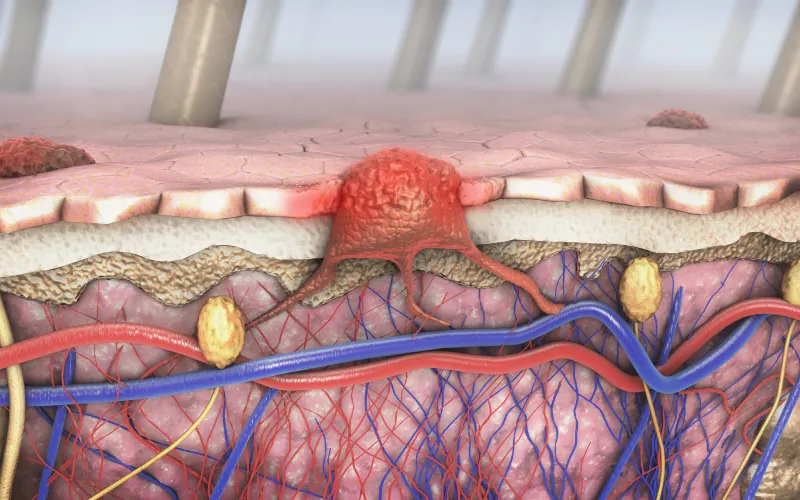As recently as 2010, the median life expectancy for people with metastatic melanoma was only 6.5 months. Despite many clinical trials investigating different treatments and approaches, this life expectancy would not budge for the advanced stage of this cancer. However, in 2011, ipilimumab was approved as the first agent ever to improve the overall survival of people with metastatic melanoma. Fast forward to 2024, there are now multiple immunotherapies and oncogenic pathway inhibitors that have increased the median survival to the six-year range.
The pivotal CheckMate-067 trial examined the use of ipilimumab and nivolumab as monotherapies and in combination in people with metastatic melanoma. The final, 10-year results were published recently in the New England Journal of Medicine.
Below, Jedd D. Wolchok, M.D., Ph.D., director of the Sandra and Edward Meyer Cancer Center at NewYork-Presbyterian and Weill Cornell Medicine and lead author on the recent publication, discusses the long-term findings from the trial and its implications for future treatment of metastatic melanoma.
Research Background
Previous results from the CheckMate-067 trial showed that use of nivolumab plus ipilimumab or nivolumab monotherapy in patients with advanced melanoma had longer overall survival than those who were treated with ipilimumab monotherapy. These were positive results that led us to want to understand the long-term durability of this treatment approach as well as the potential of late-appearing toxicities. In addition, we wanted to examine the timing of recurrence, as after three years, we saw that the survival curves were reaching a plateau.
Study Design
CheckMate-067 was a double-blind, randomized phase 3 clinical trial that had three cohorts:
- Nivolumab plus ipilimumab once every three weeks for four doses (induction phase) followed by nivolumab once every two weeks (maintenance phase)
- Nivolumab once every two weeks plus placebo
- Ipilimumab once every three weeks for four doses plus placebo
We enrolled 945 patients who had diagnosed, untreated, unresectable advanced stage 3 or 4 melanoma at 150 sites globally. The primary endpoints were progression-free survival and overall survival in the combination therapy group and in the nivolumab monotherapy group as compared to the ipilimumab monotherapy group.

The results from the CheckMate-067 trial showed greater than 50% melanoma-specific survival at 10 years in patients who received ipilimumab plus nivolumab as their initial therapy.
Research Findings
The final, 10-year results showed that there was a durable impact on overall survival and progression-free survival in both the nivolumab monotherapy and the nivolumab plus ipilimumab groups compared with ipilimumab alone. The median survival was nearly six years with nivolumab plus ipilimumab, three years with nivolumab monotherapy, and 20 months with ipilimumab monotherapy.
When we looked at melanoma-specific survival, and we saw that in patients who were randomized to the ipilimumab plus nivolumab as their initial therapy, there was greater than 50% melanoma-specific survival at 10 years.
Key Takeaways
Patients treated with either nivolumab monotherapy or nivolumab plus ipilimumab have greater durable disease control compared with ipilimumab alone. At 10-years of follow-up, there does not seem to be a signal for late emerging toxicities. Finally, the shape of the survival and melanoma-specific survival curves changes at three years. Therefore, we can begin to talk with patients about hopeful outcomes based on their scan results at that point in time.
The results of this study now enable us to convey a sense of hope to our patients that we couldn't 15 years ago. We can start talking about the word cure, which is always an emotionally charged word in oncology. We can discuss this due to the very small number of recurrences that occur after that three-year period. We can encourage people to look forward to having a healthy life after completing therapy.
Future Directions
In the melanoma field, we now can really take a page out of the textbook of pediatric oncologists that they began to write in the late 1960s and early 1970s when they developed combination chemotherapy regimens that were delivering profoundly better outcomes for children with leukemia. I think we're now at that point in melanoma care where we can ask if we can look at shorter timeframes for treatment that are less extensive and can potentially spare patients’ long-term toxicity.




